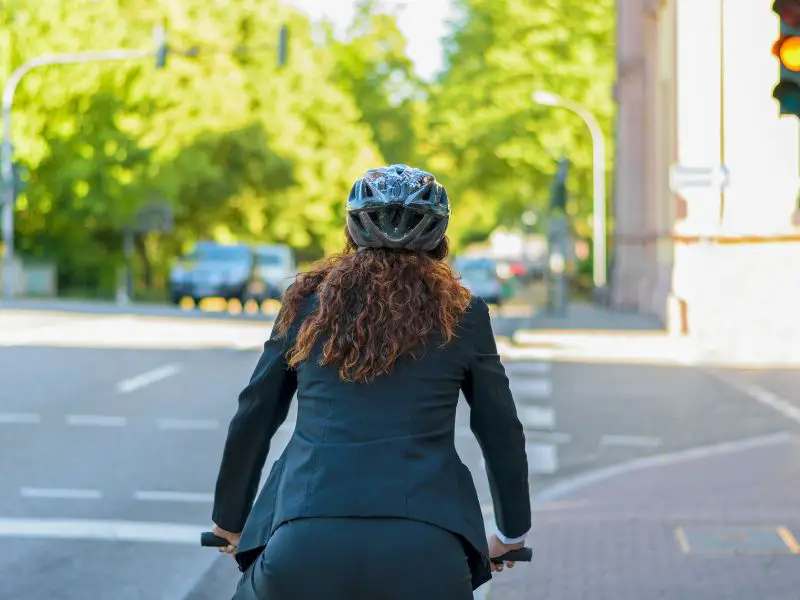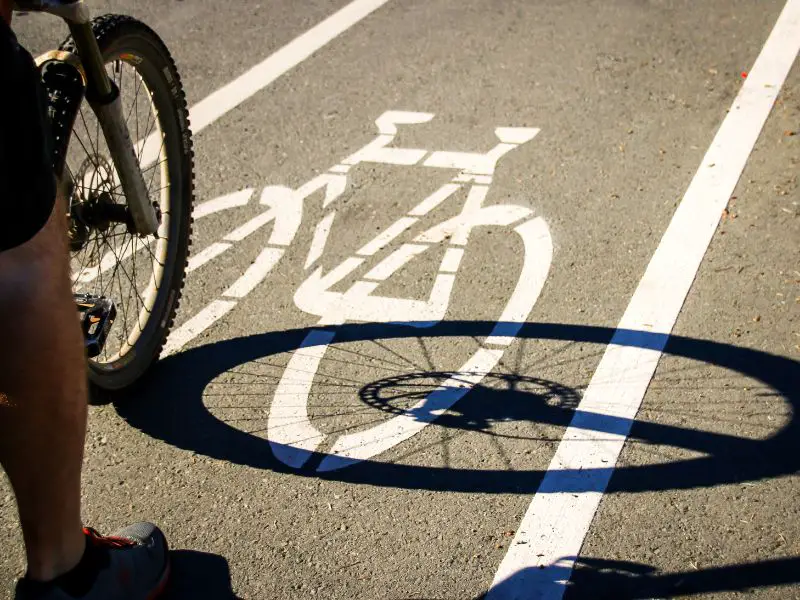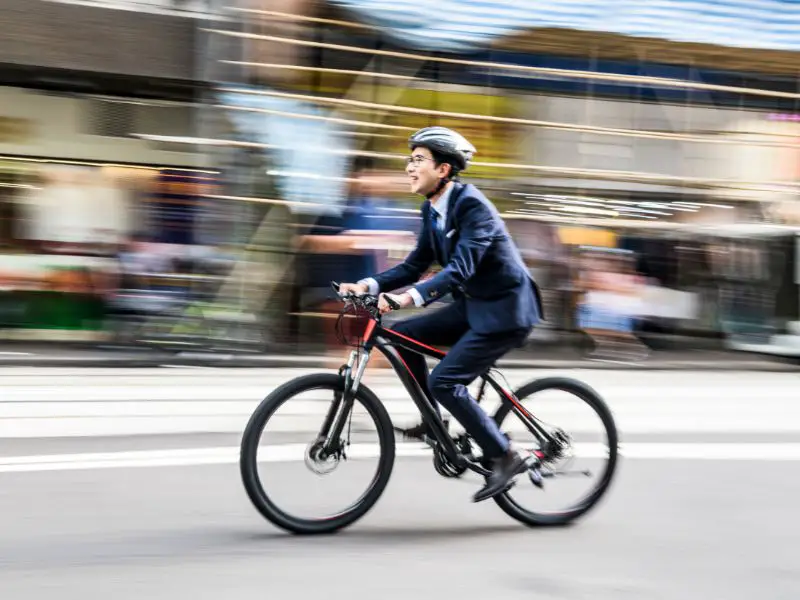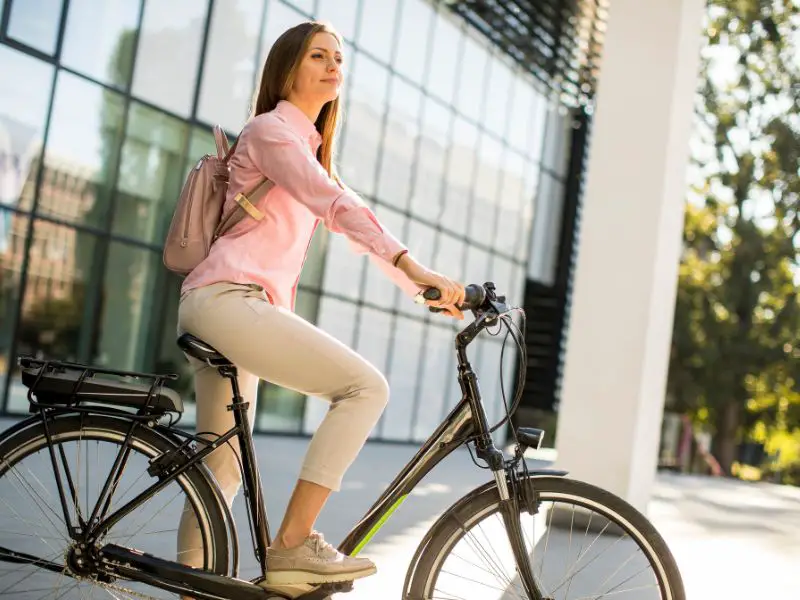When driving to work, have you ever seen a cyclist riding a bike to work and admired that person? Do you ever think cycling to work could be more fun instead of driving? Perhaps, it also crosses your mind that riding a bike to work not only benefits the environment and saves money on gas expenses, but can also help you keep fit and healthy and burn a few extra calories.
There is never a right time to ride your bike to work, although several compelling reasons exist to start cycling now. Even if you only commute a few times a week, this is still preferable to none. To help you get cycling to work, here are some tips to get started.

8 Cycling to Work Tips
1. Prepare the Night Before
When cycling to work, preparation is critical. If you don’t pack correctly, you may arrive at work sweaty and uncomfortable. Therefore, ensuring you have everything you need the night before is essential. Here are some of the things you should pack for the commute.
- Pack the heaviest items at the bottom of your bag.
- Bring some extra work shirts, put the clothes at the top, rolled instead of folded.
- Make sure you pack cycling gear, a cycling jacket, shoes, and a helmet. You don’t want to cycle to work without these biking gears, as it’s for your safety, and cycling to work without safety gears is illegal in most countries.
The easier it is to leave the house with everything you need, the less likely you will change your mind or waste five minutes searching for a missing cycling glove when you were supposed to leave five minutes ago.
2. Bring With You Some Wet Wipes
A wet-wipe wash of the armpits and groin is an acceptable alternative to a shower if you become sweaty. If your hands become grimy when repairing your bicycle en route, moist wipes can help clean up.
Leave the wet wipes in your work commuter bag or desk drawer, along with a pair of trousers and socks for emergencies. Why? If you bring your business attire every day, one day, you’ll forget your underpants. If you bike while wearing your business attire, you will eventually become drenched in rain or sweat. Be prepared!
3. Practice and Get Familiar With Your Routes
Planning and riding your route before cycling to work is an excellent strategy to reduce stress on your first day.
There are several helpful cycling apps and route mapping tools, such as Komoot and Ride with GPS, but apps like Google Maps also work well – remember to change the mode of transport from car to bike. This allows the maps to recognize calmer and safer paths for bicycles.

4. Read up on the Rules of the Road
Read up on the road rules in your location online and ensure you know the bike lanes in your area. Avoid riding on sidewalks if possible and take extra care at intersections where there are cars around.
Avoid pedaling on the left side of a vehicle, be aware of their blind spot, and understand how to overtake safely. On the road, treat drivers and bikers as you would like to be treated.
Check the weather before leaving home and adjust your clothing accordingly; for example, if it’s raining in the morning, wear waterproof clothing and carry a raincoat in your bag to be ready.
5. Moderate Your Pedaling Pace
Cycling to work is an excellent way to improve your fitness and save money on gas, but cycling at a fast and steady pace can be tiresome, especially over longer distances.
Make it easier for yourself by adjusting your pedaling. Riding at a moderate speed ensures your pedaling is more fluid, allowing you to continue at a steady pace for extended periods.

6. Get Some Good Bike Lights
A bright headlight and taillight are essential when cycling early in the morning, especially at night. If you are commuting in the dark, it is necessary to be seen by other motorists on the road to avoid accidents.
Most modern bikes come with built-in headlights that are very effective for riding during the day; however, a separate headlight is essential if you are commuting in low-light conditions in the evening or at night. Make sure to check your bike lights regularly and make sure they are fully charged.
7. Communicate With Drivers
Being courteous to other drivers and pedestrians is integral to cycling to work. Cyclists are responsible for considering traffic laws, traffic signals, and pedestrians.
Communication is essential when you are waiting at traffic lights. Cyclists should obey traffic lights, signs, and signals and be aware of the pedestrians ahead of them, as cyclists are more vulnerable than drivers.
8. Look Out for Parked Car Doors Swinging Open
Look out for parked car doors swinging open unexpectedly. Also, when driving in a car, it is easy to miss a cyclist; therefore, cyclists should always check both ways before crossing an intersection to ensure no cars are coming at them from behind before crossing the street.
Cyclists are vulnerable; therefore, they must exercise caution while on the road. Don’t risk your safety for a few extra minutes!
What Is the Best Bike for Biking to Work?
Various models accommodate all types of terrain, from riding on paved roads and rougher terrain to tackling even the hilliest routes. Here are some types of bikes we recommend.
1. Crossbar or Low Step
These models are the most comfortable to ride as they allow you to sit upright in a more relaxed position than on road bikes. Crossbar or low-step frames are appropriate for people who can or cannot swing their legs to mount the bike. Depending on your outfit or injury, the frame type might make a world of difference on your joints, allowing you to hop on easily.
2. The Hybrid Bike
Hybrid bicycles are meant to be incredibly adaptable and suitable for a variety of terrains, making them ideal commuting bicycles. The tread pattern on the tires is dependable and provides sufficient traction.
3. The Electric Bike
Riding to work on an electric bike, with the knowledge that you’ll always have backup ammo behind you, is the ideal transportation model for folks who live in very steep places.
An electric bike may make your commute easier before (and after) a hard day at work by relieving some of the burdens of carrying extra weight and providing a power boost when you need to take it easy. E-bikes are also a fantastic option for anyone concerned about working up a sweat before arriving at work.

4. The Folding Bike
If you want to commit to greener travel, a foldable bike is necessary for longer trips that rely on public transportation. These bikes allow you to pedal to work and bring the bike with you whenever you need to ride the train, bus, or subway. Once you’ve arrived at your stop, get back on and ride away!
Author’s Note
Cycling to work may be your answer if you’re tired of spending hundreds of dollars a month on gas and you’re sick of feeling sluggish because of traffic. Proper planning allows you to enjoy all the benefits of cycling without sacrificing your time on the road. Good luck!


3 thoughts on “How to Start Cycling to Work: 8 Successful Tips”